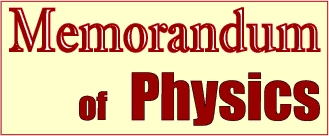Newton's laws of motion[3]
Equations of motion (Second Law)
Laws that show the relation between force and the motion are Newton's laws of motion.
This consists of three laws. (See below)
| First Law | If force doesn't act, the object continues a state as it is. |
| Second Law | If force acts on the object, the acceleration proportional to mass is caused. |
| Third law | When force acts on the object, the object is pushed back by the force of the same size. |
Here, the second law of motion of the law, equations of motion to explain.
The object is not participate unless the force, continue to have the property intact. (The law of inertia)
That the "state of motion and make a change in power," they say.
Chop the ball rolling on the floor and smooth.
I did not join the force (force of friction can be ignored, so fine), this ball rolling at the same rate would continue indefinitely.
Uniform motion is a motion like this.
And try to stop the ball with fingers.
Had uniform motion object (ball), but it stopped in the power of the finger.
This meant that the state of the motion by adding the power.
Will slow down or lightly touching the ball rolling, it's possible to change the direction of rolling.
In this case, the changes will be made by the state of the motor power.
The ball had stopped moving, the slowdown that is curved, indicating that the change in speed.
Change in velocity is acceleration.
When you change the status of the exercise is to cause the acceleration of that.
What kind of power and make, or cause the acceleration is what rules.
An equation of motion of this rule.
The object is "to join forces, the acceleration is proportional to the mass produced" in the nature.
Equations of motion is, it's a summary of this relationship as a formula.
Equations of motion are described as follows.
F = ma
